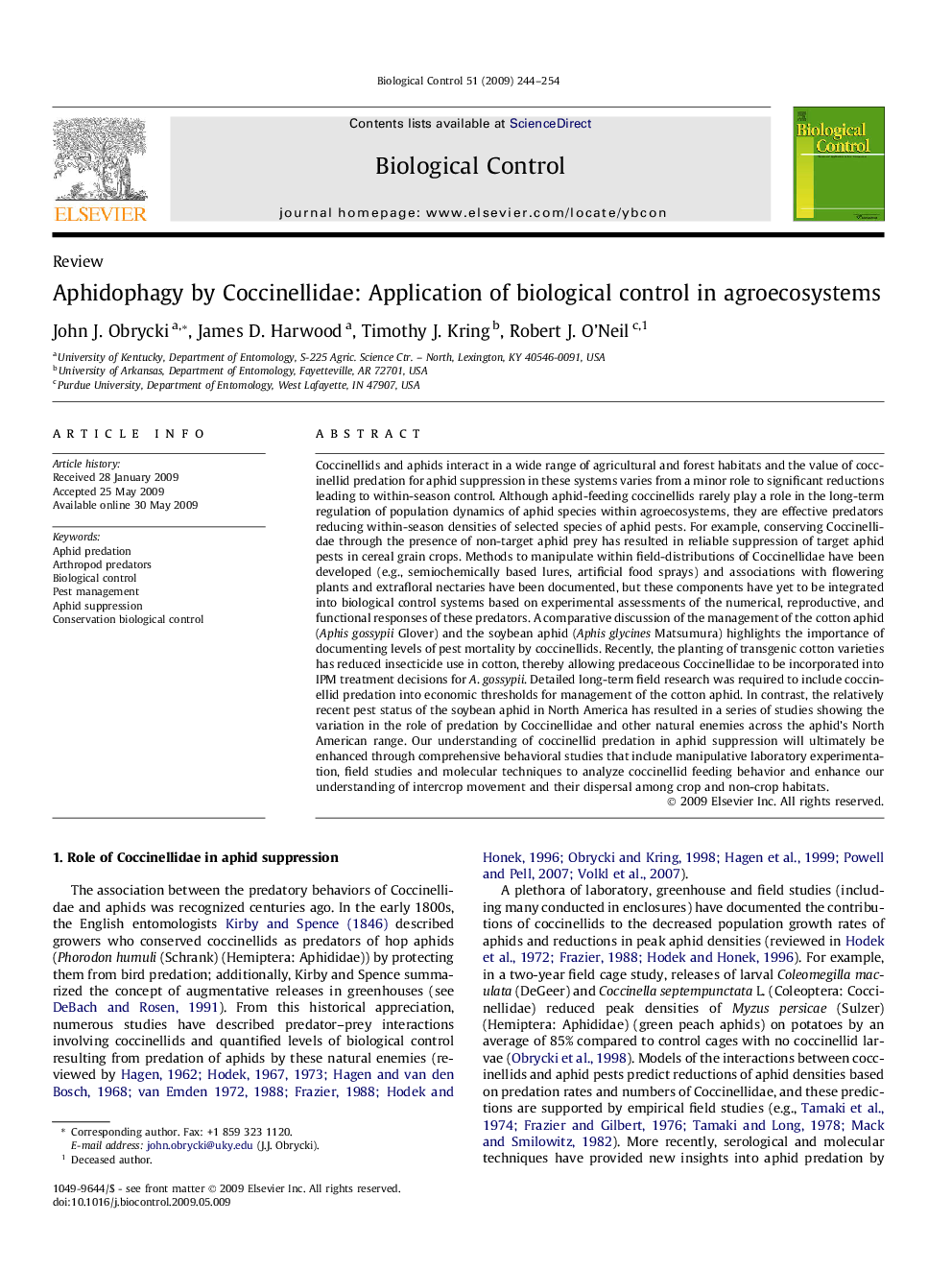| Article ID | Journal | Published Year | Pages | File Type |
|---|---|---|---|---|
| 4504291 | Biological Control | 2009 | 11 Pages |
Coccinellids and aphids interact in a wide range of agricultural and forest habitats and the value of coccinellid predation for aphid suppression in these systems varies from a minor role to significant reductions leading to within-season control. Although aphid-feeding coccinellids rarely play a role in the long-term regulation of population dynamics of aphid species within agroecosystems, they are effective predators reducing within-season densities of selected species of aphid pests. For example, conserving Coccinellidae through the presence of non-target aphid prey has resulted in reliable suppression of target aphid pests in cereal grain crops. Methods to manipulate within field-distributions of Coccinellidae have been developed (e.g., semiochemically based lures, artificial food sprays) and associations with flowering plants and extrafloral nectaries have been documented, but these components have yet to be integrated into biological control systems based on experimental assessments of the numerical, reproductive, and functional responses of these predators. A comparative discussion of the management of the cotton aphid (Aphisgossypii Glover) and the soybean aphid (Aphisglycines Matsumura) highlights the importance of documenting levels of pest mortality by coccinellids. Recently, the planting of transgenic cotton varieties has reduced insecticide use in cotton, thereby allowing predaceous Coccinellidae to be incorporated into IPM treatment decisions for A. gossypii. Detailed long-term field research was required to include coccinellid predation into economic thresholds for management of the cotton aphid. In contrast, the relatively recent pest status of the soybean aphid in North America has resulted in a series of studies showing the variation in the role of predation by Coccinellidae and other natural enemies across the aphid’s North American range. Our understanding of coccinellid predation in aphid suppression will ultimately be enhanced through comprehensive behavioral studies that include manipulative laboratory experimentation, field studies and molecular techniques to analyze coccinellid feeding behavior and enhance our understanding of intercrop movement and their dispersal among crop and non-crop habitats.
